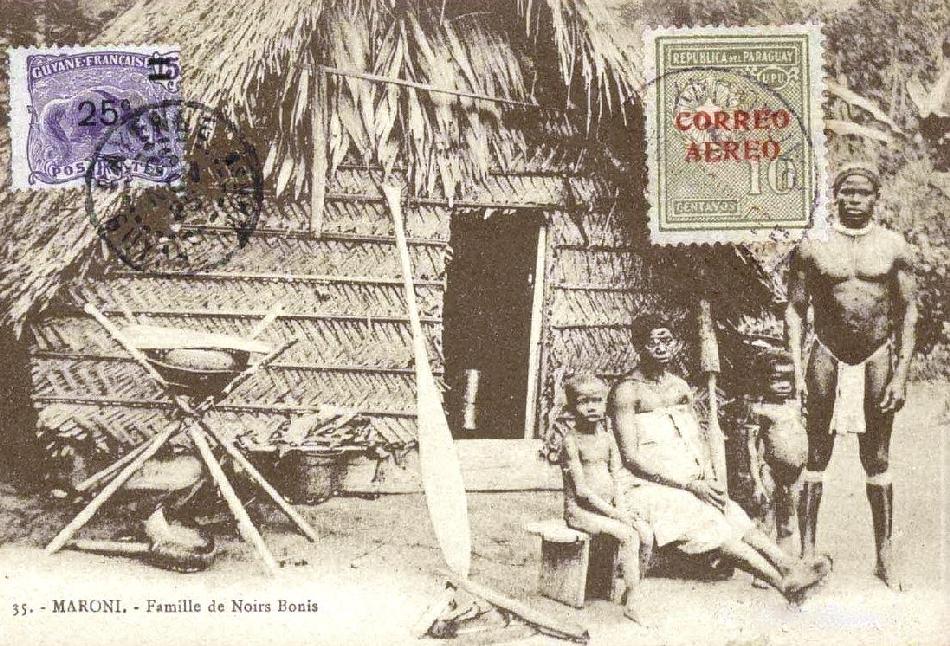
Figure 1.--Here we have the family of Noira Bonis. His father was a captain with the French colonial service in Guiana. He is pictured with with his family. They are a Maroon group, decended from runaway slaves that fled into the interior. Many Maroons were the recently enslaved with a full understanding of African culture. This photoigraoph was taken in the 1920s. The photograph has a date stamp cancelation, we can make out what looks to be Nov 25, we think meaning 1925. (The stamp was issued in 1904, bit surcharges began to appear after the war in 192.) The family seems to be living an Aftrican village life style even well into the 20th century. It is unclear, however, to what extent they were influence by African or Amerindian culture, but they do not seem to have intermarriaed with the Amer-Indians. The Maroni was a river which became the the border betweem French Guiana and Surinam. Most Maroon settlements were located in this area of western French Guiana, hence the name of the river. |

